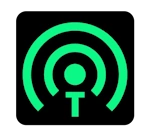Remember the early days of Google Translate? Back when you’d plug a sentence in, hit translate, and get something that sounded like it came from a broken robot? “I am eat apple” was about as good as it got. But fast forward to today, and Google Translate has become an essential tool in global communication, making language barriers feel like they’re crumbling away. Or is it?
While Google Translate has come a long way, it’s now facing competition as new technologies push the boundaries of translation tools. Google Translate began with a phrase-based system, where languages were broken into phrases and matched word by word. The results were often comical and nonsensical. But by 2016, Google made a breakthrough with Neural Machine Translation (NMT), allowing it to translates text from one language to another by understanding the meaning of whole sentences, not just individual words. This shift dramatically improved its accuracy, making translations feel more natural and fluent.
In June 2024, Google announced the addition of 110 new languages to Google Translate, bringing the total to over 243 supported languages. However, finding up-to-date data on its user base and total app downloads remains a challenge. The latest reported figure from Google Play Store shows that Google Translate surpassed 1 billion downloads as of 2021, but no official update or exact number has been provided since.
Despite its technological advancements, Google Translate’s dominance is under pressure. AI-powered competitors like DeepL, Microsoft Translator, and conversational AI chatbots such as ChatGPT are quickly narrowing the gap. A 2024 comparative analysis by PCMag revealed a striking trend: AI chatbots like ChatGPT, Google Bard, and Microsoft Bing were favored over Google Translate for translating nuanced, idiomatic language. ChatGPT, for instance, excelled at translating colloquial expressions, converting idioms like “blow off steam” into culturally relevant equivalents. Meanwhile, Google Translate often provided more literal translations, which lacked the contextual sensitivity needed for more accurate cross-cultural communication. This raises the question: Is Google Translate still a leader, or is it becoming obsolete in a world that demands more sophisticated, context-driven AI?
DeepL, known for its superior European language translations, and Microsoft Translator, popular in enterprise environments, have gained ground for offering more nuanced and natural-sounding translations. Despite Google Translate’s continued effectiveness for general use, these newer tools are preferred for more contextually accurate translations, especially in complex or idiomatic language.
Nonetheless, Google Translate remains a dominant force, supporting over 243 languages and providing seamless integration across various platforms. Its real-time translation capabilities for text, images, and speech are still widely used, helping it maintain a leading position. But as AI-powered translation technology evolves, its future will depend on how well it adapts to the growing demand for contextual accuracy and deeper AI integration.
Google Translate has transformed from a clunky tool with robotic translations to a global powerhouse. However, as AI technology advances, so too do the capabilities of its competitors. The future of Google Translate hinges on its ability to remain relevant in a fast-changing market, where real-time, context-aware translations are becoming the norm. Whether it can continue to lead or be overtaken by more sophisticated systems is still uncertain, especially in the absence of up-to-date data on its active user base. How about you? Are you still using Google Translate?
Resources: PCMag, BlogGoogle
Image Credit: 5./15 WEST@iStock
Discover more from TECH HOTSPOT
Subscribe to get the latest posts sent to your email.
